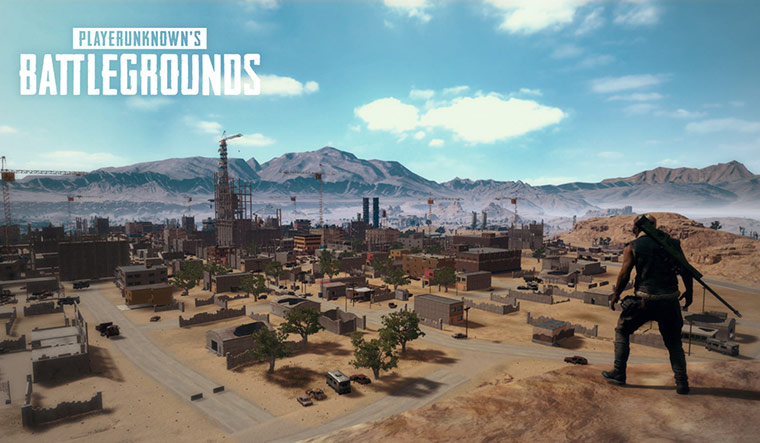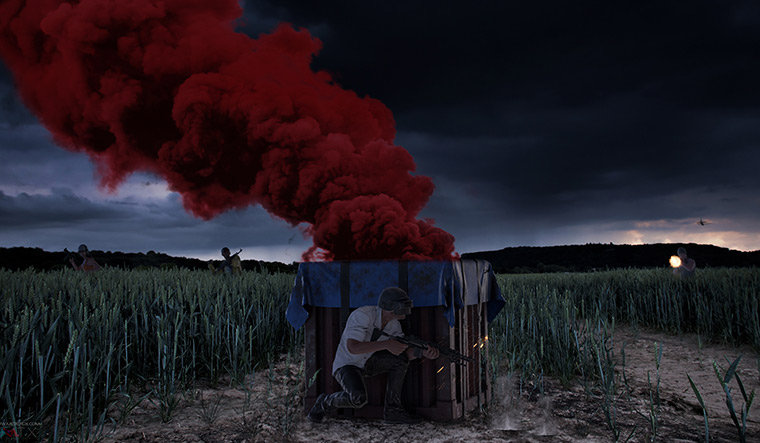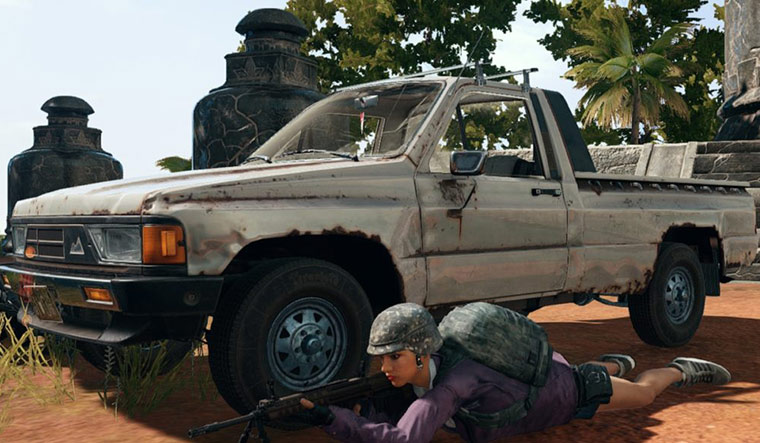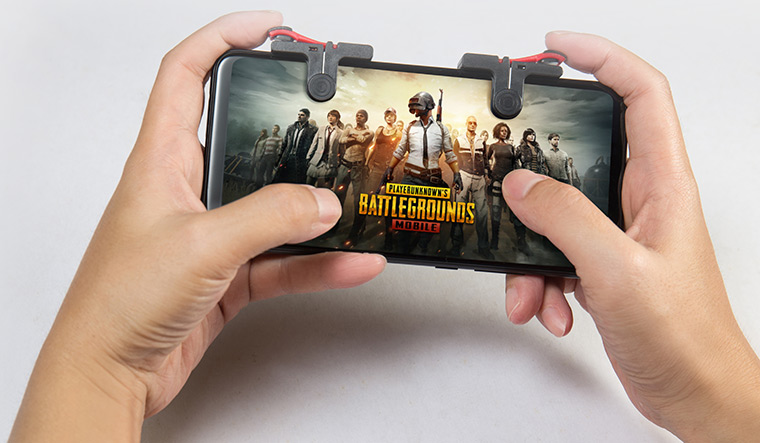IT WAS A STORY that usually would not have merited a second glance. Two brothers were spending long hours on their mobile phones. Yawn. Wait, there is more! Their house got robbed twice, when they were at home playing online games. And, they had even urinated in their pants, refusing to leave their phones even when nature called. The elder one was 22, into his second year of bachelor’s in engineering. The younger one, 19, should have been preparing for his higher secondary board exams that year. Of course, the upper middle class parents had started noticing that something was off. Declining interest in studies. Irritable. Anti-social. Erratic sleep pattern. But who thought things would go this far?
This was a case that Ankur Sachdeva, professor at the Employees’ State Insurance Corporation (ESIC) Medical College in Faridabad, witnessed in 2012. It was one of the first cases of technology addiction to cross his desk. This was a time when the term was yet to enter the medical lexicon. “Such incidents used to be a rarity,” says Sachdeva. “After 2013, however, the numbers spiked. I have come across at least 10 such cases.”
What is the socio-economic profile of an at-risk gaming addict? “Earlier, gaming was a source of entertainment for the upper middle class, people who could afford consoles and gaming equipment,” says Sachdeva. “Now, their favourite titles are available on low-end smartphones. This has opened up the playing field, quite literally.”
The neo-addict may be nameless and faceless, but the proverbial substance has a controversial mascot—an online battle royale named PlayerUnknown’s Battlegrounds (PUBG). In the multi-player, multi-platform shooter game, 100 participants are parachuted into a deserted location where one must loot and kill to survive. The last man standing wins the coveted ‘chicken dinner’—a phrase that flashes on the victor’s screen.
The title, developed by South Korean company Bluehole, has been banned in primary schools in Gujarat. Agitated students and parents’ associations in Jammu and Kashmir angrily lobbied for PUBG to be outlawed. On January 25, the principal of a leading school in Srinagar issued an email to parents: “A worrying trend among our youngsters has prompted me to mail you. I would like you to please monitor your ward with regard to the use of the [mobile] app PUBG. Please do take serious measures to curtail this dangerous trend plaguing our children.” The deputy mayor of Srinagar, Sheikh Imran, met Governor Satya Pal Malik and demanded a ban on the game. “Our proposal was appreciated by the governor and the request is under consideration,” Imran told THE WEEK.
Nandita Amin, education manager of Anand Vidya Vihar and New Era Secondary School, both in Vadodara, Gujarat, said that banning PUBG across primary schools in the state was a huge achievement. These schools, she said, conducted workshops and counselling sessions for parents on the dangers of overuse of technology and the internet. “Instead of talking to friends in a room, they are all hooked on gadgets—physically present, mentally absent and virtually alive,” she said. On February 1, in the Jharkhand assembly, Congress MLA Irfan Ansari demanded a ban on the “addictive” game.
It was a testament to PUBG’s notoriety that Prime Minister Narendra Modi has been briefed about it. A distraught mother told Modi, at his Pariksha Pe Charcha programme, that online mobile games were distracting her son. Modi replied: “Yeh PUBG wala hai kya (Is he a PUBG player)?”
★ ★ ★ ★
PUBG surged in popularity after its mobile version, PUBG Mobile, developed by Chinese company Tencent Games, hit the market in 2018. At any given time, 87 million users are active. The game was by no means the first to make a mark in the battle royale genre, but its popularity touched unscaled heights. According to a Quartz survey conducted by internet service provider Jana on its mCent browser, 62 per cent of 1,047 respondents (smartphone users) admitted to be PUBG players.
According to the analytics firm Sensor Tower, PUBG was downloaded more times than Netflix and YouTube in the first half of 2018. “There are four factors that contribute to PUBG’s immense popularity across age groups—storyline, graphics, the multiplayer experience and availability across PC, console and mobile platforms,” says Aswin Haryani, co-founder of GamingMonk, an e-sports gaming startup in New Delhi. “The mobile gaming space in India is bound to grow by leaps and bounds. According to the figures from the last six months, PUBG Mobile has five million active users in India on a daily basis.” Insensitive PUBG memes had made an appearance even after the Pulwama attack. News18.com reported that a Kashmiri student in Dehradun was expelled for commenting “PUBG turned real today”, after the incident.
To say the gaming industry in India is on an uptick would be a Himalayan understatement. According to a report by e-sports analytics firm Newzoo, there are 236 million gamers in India—more than that of the combined population of Spain and Germany. According to consultancy firm Pricewaterhouse Cooper (PwC), the overall video game and e-sports revenue from India is expected to touch $2.7 billion by 2022, at a compound annual growth rate (CAGR) of roughly 35 per cent. To put that in perspective, the growth rate is twice that of Pakistan’s, which is a distant second.
The availability and affordability of mobile devices, combined with cheap 4G data—a juggernaut that Reliance Jio set in motion—has amplified their reach. The games can be played on mobile phones that are as cheap as Rs4,000. Companies are now releasing ‘lite’ versions which reduce data consumption substantially. “They can easily be played on any mid-range iOS and Android devices,” says Sanjay Mehta, co-founder of Mirum India, a digital marketing agency. “Anyone from an avid gamer to a novice can ace it (PUBG), given it is a free game with smooth user interface and easy-to-follow instructions.” Even political parties have jumped on the bandwagon. To commemorate the 93rd birth anniversary of Shiv Sena supremo Bal Thackeray, on January 23, Yuva Sena—the party’s youth wing—organised a state-level PUBG competition in Maharashtra’s Raigad district.
However, PUBG’s popularity is only the tip of the iceberg. “The two biggest games in India, for the past five years have been Counter Strike: Global Offensive and Dota 2,” says Satadru Bhowmik, staff head at Nodwin Games, a Gurugram-based e-sports company. “Looking at the 2018 statistics, CS:GO has paid 01.1 crore in prize money, and Dota 2 has dished out Rs1.2 crore. Other games such as Tekken 7, Street Fighter, Clash Royale and FIFA are also making their mark.”
Given the all-pervasive nature of the “fix”, will a ban on PUBG accomplish anything? “In psychological terms, no,” says Dr Manoj Kumar Sharma, head of the Service for Healthy Use of Technology (SHUT) clinic, NIMHANS (National Institute of Mental Health and Neurosciences), Bengaluru. “Be it alcohol or narcotics, a ban does not take into account user acceptance to change. Control has to be exercised by all stakeholders. We have to educate children of its dangers.”
From a technical perspective, a state-wide ban, like the one proposed in Jammu and Kashmir, is a laughable proposition. “All you have to do is access the Play Store through a third-party Virtual Private Network [VPN],” says Vikas Jain, a security consultant based in Hyderabad. “It will make it seem like you are a visitor from the United States, or any other country where the ban is not applicable.”
Then, there are the underlying social and economic fault lines that a blanket ban sweeps under the rug. Take the case of Kashmir. One reason the youth in the valley have taken to mobile games is the lack of entertainment avenues, owing to the long-standing conflict. After militancy gained strength in the late 1980s, cinemas, which were the primary source of entertainment, were shut under their diktat. Socialising and nightlife became pipe dreams, thanks to routine search operations and militant strikes. Currently, there is only one cinema theatre in the state, located in the high-security sector of Badami Bagh.
★ ★ ★ ★
Sharma of NIMHANS recounts a 2018 case at the SHUT clinic, which dealt with PUBG addiction in a 15-year-old. “He was the single child of middle-class parents, and he got introduced to the game through school friends,” he says. “Apparently, he won some incentives and wanted to pursue gaming as a career. He started playing 8-10 hours [a day], his mental faculties suffered and his academic performance dipped.”
The “incentives”, like sizeable tournament pots-of-gold and chances to build lucrative brand partnerships, are a big part of the millennial allure. Most competitions happening across the country offer substantial rewards. Recently, Tencent Games, along with PUBG Corp, announced an ‘open-to-all’ PUBG tournament—the prize money was a massive Rs1 crore. GamingMonk organised a tournament in December 2018, which had more than 10,000 participants. A 21-year-old from Delhi walked away with Rs1,26,687.
Every night from 9:30pm to 4am, Rishabh Karanwal plays PUBG on his PC. With him in that timeslot are some 2,000 other gamers who watch him play and listen to his commentary as he streams it live on YouTube. Apurva Vijayvargia, an engineer with Tata Consultancy Services in Mumbai, is one of them. Vijayvargia logs into the game after his wife, Prachi, goes to sleep, and logs out before she wakes up. As Karanwal’s game progresses, random followers click to say hello and donate money—both in rupees and dollars—as a gesture of appreciation and support.
Karanwal, who works as a senior analyst with Accenture in Gurgaon, and goes by the handle Raka, has a whopping 91,000 subscribers on his YouTube channel. “I started playing the game three years back, on my PC. Now, I make anywhere close to Rs50,000 per month,” he says. Last year, on his birthday in March, he played PUBG for 12 hours straight as a way of celebrating it with his viewers. “Live streaming is one of the career opportunities for gamers,” says Vamsi Krishna, consumer marketing head (south Asia) of Nvidia, which partners with Karanwal. “Many streamers have quit their regular jobs to pursue their passion full time. India is among the top three countries for PUBG consumerism in the world.”
Mainstream sports events, be it the Indian Super League (ISL) or the Indian Premier League (IPL), suffer from the stranglehold of rich corporates—be it in the sectors of channel distribution or athlete management. But, e-sports, still in its nascent stage, has the potential to offer a more democratic setup and lucrative financial gains for emerging players. And, legacy firms have started to take notice. “Hotstar or Amazon Prime have streamed or given live coverage,” says Haryani of GamingMonk. “A lot of OTT (over-the-top) platforms are streaming e-sports as well. It is still evolving. We cannot compare it with football or cricket as of now, but eventually this could be aired on television also. And, it is happening globally. It is just a matter of time.”
In 2017, audit firm KPMG profiled an average Indian gamer. More often than not—around 83 per cent—he is male. He is below the age of 24, plays for stress relief and social interaction, and with a pronounced preference for puzzle, action and adventure genres. The games, with their slick graphics and edgy sound effects, are calibrated as a “spectator sport” with this demography in mind.
“We need strong personalities in the e-sports domain,” says Haryani. “For example, many watch cricket only because a Virat Kohli or a Rohit Sharma plays. They follow a team, or a particular player. In e-sports also, we need celebrity names with a big personal draw, who can bring in masses. This is where gaming influencers come into picture. This is also why we focus on live streaming, in a big way.”
★ ★ ★ ★
In a sweltering afternoon in Mumbai’s Matunga, in a cafe outside Ruia College, youngsters sit glued to their phones. Prasad Chalke is one of six PUBG aficionados, seated on a cracked concrete embankment bordering a cricket field. Chalke, in denims and a t-shirt, is tall and excitable. A photographer, he reels off a list of in-game accomplishments and says PUBG is the ‘Instagram of gaming’. “It takes a minimum of half an hour to finish a round. By then, you get so hooked that you just do not want to stop,” he says.
We request permission to photograph the group. Most of them immediately covered their face. “Please do not disclose my identity in the story, lest my employer and family find out that I spend so much time playing PUBG here,” says an advertising professional. Chalke, who is brave enough to allow his name to be used, says, “There is a certain stigma attached to the notion of playing PUBG and so not many people actually admit that they play the game. You are looked at as someone who wastes time, is immature and has nothing better to do.” The conversation lasts about 15 minutes. Headphones back on, eyes glued to the screens, it was time for them to leave the confusing, disorienting world of nosy reporters, looming deadlines and terrible quality graphics.
WITH VAISAKH E. HARI, TARIQ BHAT AND NANDINI OZA







